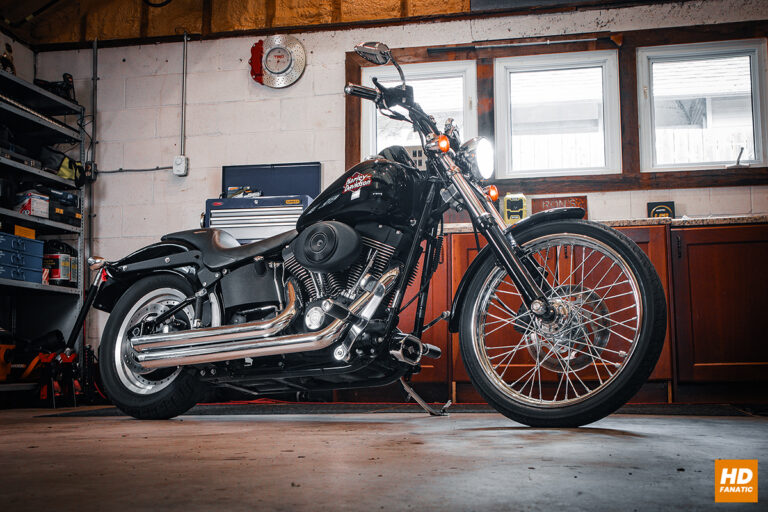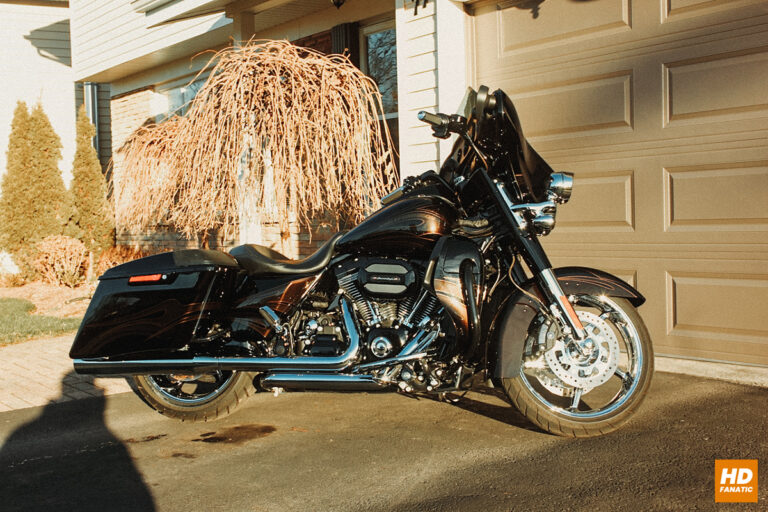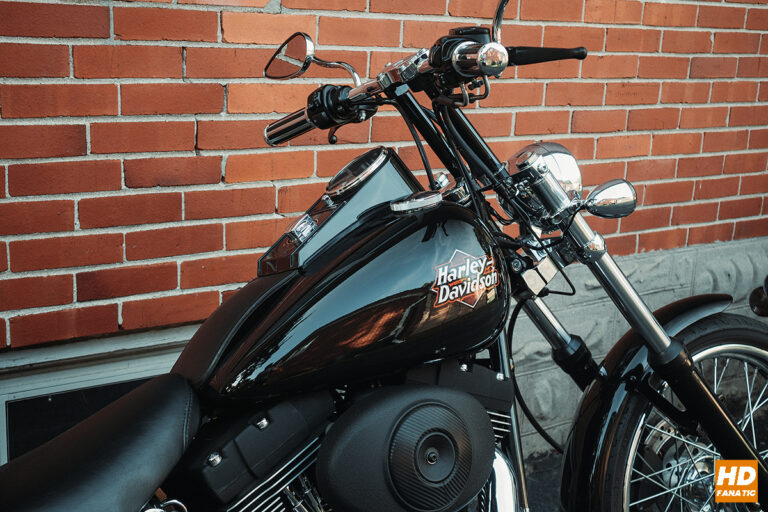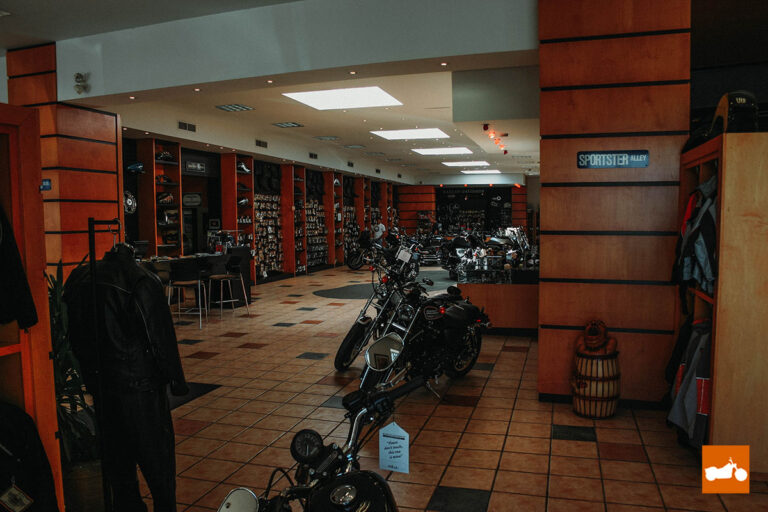Harley Davidson Depreciation – Everything You Need To Know
Depreciation is an inevitable reality that every motorcycle owner faces. As you roll your new bike off the lot, its value immediately takes a hit. However, not all motorcycles depreciate at the same rate.
In fact, some bikes tend to hold their value much better than others. Among these, Harley-Davidson stands out as an iconic brand known to depreciate at a significantly slower pace compared to other motorcycles on the market.

The reason behind Harley-Davidson’s impressive value retention can be attributed to various factors such as the brand’s rich history, strong customer loyalty, and the emotional connection people have with their bikes.
Additionally, certain Harley models may depreciate slower or faster due to factors such as nostalgia, market trends, and fads. Understanding the depreciation of Harley-Davidson motorcycles can help you make a more informed decision when choosing which model to purchase.
Key Takeaways
- On average, motorcycles depreciate, but Harley-Davidsons tend to retain their value better than other brands.
- Depreciation rates may vary depending on the specific Harley model and external factors.
- Comparing Harley-Davidson’s depreciation rates with other brands can help buyers make informed decisions.
What Harley Davidson Models Depreciate the Most
While Harleys generally hold their value better than other motorcycle brands, some models depreciate more than others. If you’re looking to buy a Harley, it’s essential to understand which models are more likely to hold their value in the long run.
Here is a table showing the average depreciation percentages of Harley-Davidson Sportster, Softail, and Touring models:
| Model | 1st Year Depreciation | 2nd Year Depreciation | 3-10 Year Depreciation |
|---|---|---|---|
| Sportster | 35-40% | 25-30% | 15-20% |
| Softail | 30-35% | 20-25% | 10-15% |
| Touring | 25-30% | 15-20% | 5-10% |
The 1st and 2nd year depreciation percentages for Sportster, Softail, and Touring models were estimated based on data showing typical motorcycle depreciation curves from sources like the NADA Guides.
The 3-10 year depreciation was estimated slightly lower since Harley-Davidson models, especially touring models, are thought to hold their value better in later years according to sources like Harley Davidson Forums.
As you can see, the Sportster depreciates more rapidly than the Softail and Touring models. The primary reason for this difference is the demand and appreciation for Softail and Touring models within the Harley community, as they offer a unique riding experience and are known for their durability and reliability.
However, remember that other factors like customization, condition, mileage, and local market conditions can affect depreciation rates. So, when deciding on the model to buy, make sure to research your local market and consider your specific riding preferences, as these factors can have a substantial impact on your motorcycle’s value down the road.
The Harley Davidson Model With the Worst Depreciation

The Harley-Davidson V-Rod was introduced in 2001 and discontinued in 2017. According to various sources, the V-Rod is one of the Harley-Davidson models that depreciate the most due to its limited popularity.
The depreciation rate of the V-Rod varies depending on factors such as the year and condition of the motorcycle, the mileage, and the location. However, according to Motor & Wheels, the V-Rod depreciates at a rate of around 30-40% in the first year, around 25-35% in the second year, and around 20-30% in the third year.
It’s worth noting that even though the V-Rod depreciates more than other Harley-Davidson models, it still holds its value better than many other motorcycle brands. Additionally, the V-Rod has a loyal following and is known for its unique styling and performance, which may help to mitigate its depreciation rate.
The V-Rod’s depreciation doesn’t necessarily mean that it was a bad bike. Perhaps the Porsche-engineered engine and modern styling just didn’t resonate with the typical Harley Davidson enthusiast.
Depreciation Factors of Harley-Davidson

Harley Davidson Build Quality
One major aspect that differentiates a Harley from other motorcycles is its build quality. You’ll experience the use of high-quality materials, craftsmanship, and attention to detail, leading to a machine that lasts longer and withstands wear and tear better than most motorcycles. This quality adds to the overall resale value and longevity of Harley-Davidson motorcycles.
Harley Davidson Reliability
Reliability is another factor that contributes to Harley-Davidson’s depreciation rate. The modern bikes are known for their durability and strong engines. With proper maintenance and care, these motorcycles can easily reach high mileage, only adding to their resale value. An accident-free history and good condition also play a role in keeping your Harley’s value up.
Depreciation and Production Volume
Harley-Davidson produces motorcycles in lower volumes than other major manufacturers. This means pre-owned Harley bikes can be relatively rare, making them more desirable in the market. As a consequence, the low production volume helps to maintain their resale value and reduce depreciation.
Model Popularity and Exclusivity
Harley-Davidson offers various models, such as the Street Glide, Road King, Softail, Electra Glide Ultra Classic, and Ultra Limited. Each model’s popularity, exclusivity, and demand directly impact its depreciation rate.
Generally, more exclusive and limited edition models will hold their value better over time, while popular models may have slightly higher depreciation rates due to a larger supply in the market.
Impact of Pop Culture and Fads
Harley-Davidson’s long history and iconic status in pop culture help maintain its value. The brand has been featured in countless films, TV shows, and other media, contributing to its popularity and demand among motorcycle enthusiasts. While fads may come and go, Harley-Davidson’s established presence in popular culture helps to stabilize its motorcycles’ depreciation rates.
Comparing with Other Brands
Depreciation: Harley-Davidson Vs Indian
When comparing Harley-Davidson and Indian motorcycles, you’ll find that Harleys tend to hold their value better. According to the LA Times, the average Harley held an incredible 84% of its value over five years, while Indian motorcycles held 77%. The main reason for Harley’s superiority in the depreciation factor is the brand’s prestige and history.
Depreciation: Harley-Davidson Vs Yamaha
Comparing Harley-Davidson to Yamaha, you will notice some differences in their depreciation rates. Harley-Davidson has a higher brand retained value that reduces after five years. Yamaha, on the other hand, has a good depreciation rate but still not as strong as Harley-Davidson’s.
However, it’s essential to consider that Yamaha offers a more diverse range of motorcycles, which can impact the overall brand’s depreciation rate.
Depreciation: Harley-Davidson Vs Ducati
Harley-Davidson and Ducati are both well-known brands, but their depreciation rates slightly differ. Harley-Davidson has an average depreciation rate of 84% over five years, while Ducati’s depreciation rate stands at 73%.
Even though Ducati is known for its performance and high-quality motorcycles, Harley-Davidson’s long-standing history and brand prestige give it the edge when it comes to maintaining value over time.
Depreciation: Harley-Davidson Vs Triumph
Lastly, let’s take a look at how Harley-Davidson’s depreciation rate compares to Triumph motorcycles. Harley-Davidson holds 84% of its value over five years, while Triumph holds 72%. Although Triumph motorcycles have a strong following and good performance, Harley-Davidson’s brand image and history contribute to its better retention of value.
In conclusion, while all motorcycle brands will experience depreciation over time, Harley-Davidson stands out due to its rich history and brand prestige, which has allowed it to maintain a higher value compared to other brands on the market.
Final Thoughts on Depreciation and Harley-Davidson

When you’re considering specific Harley models, the Street Glide, Road King, Soft Tail, and Electra Glide Ultra Classic are some popular choices. Each of these models may have varying depreciation rates depending on the individual bike’s history, maintenance, and other factors that can impact resale value. However, in general, these models have a good reputation for retaining their value.
For those who prioritize value, the touring bikes are a great option to look into. As a Harley-Davidson lover, you might find these bikes an excellent choice for long-term value and enjoyment. Used Harleys can also offer a good return on your investment, as they often depreciate more slowly compared to brand new ones. Let the original owner take the biggest depreciation hit!







